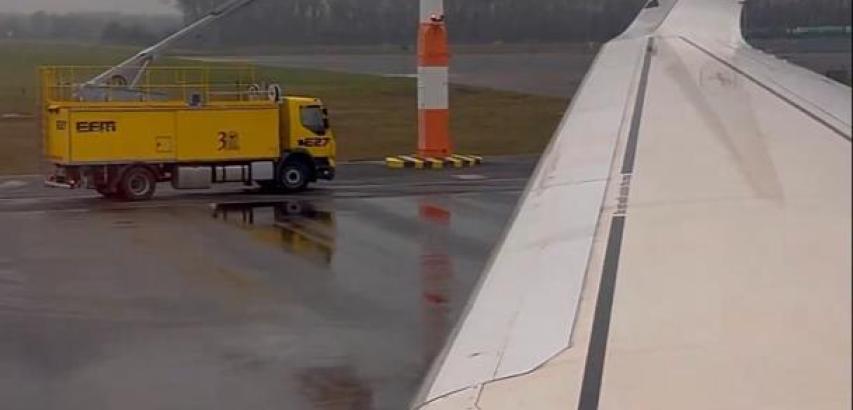
Spraying planes with a yellow material before takeoff in some European airports is a part of de-icing procedures. This process is crucial for maintaining flight safety in cold weather conditions, especially during the winter. Here's an explanation:
Why De-Icing is Necessary
Ice Accumulation Risk: Ice, frost, or snow can accumulate on the wings, fuselage, and control surfaces of an aircraft while parked in cold or snowy conditions.
Impact on Aerodynamics: Ice disrupts the smooth airflow over the wings, reducing lift and increasing drag, which can make the plane difficult or impossible to fly safely.
The Yellow Material
The yellow liquid is typically de-icing fluid or anti-icing fluid made from glycol-based solutions mixed with water.
De-Icing Fluids: Heated and applied to remove ice or snow already present on the aircraft.
Anti-Icing Fluids: Applied after de-icing to prevent new ice or snow from forming. These fluids contain additives to help them stick to the aircraft and delay freezing.
The yellow color often comes from dyes added to the fluid to make it visible, ensuring thorough coverage during application.
When and Where It's Used
This procedure is common in cold weather conditions at airports in Europe and other regions prone to frost and snow.
Planes are sprayed on the ground, typically at designated de-icing pads near the runway or at the gate, before they take off.
Ensuring Safety
The de-icing process is carefully timed to ensure that the fluid remains effective until the plane takes off. This is referred to as the "holdover time." If delays occur, the plane may need to be sprayed again.
This process is a vital part of winter operations to ensure safe takeoff and flight performance in icy or snowy conditions.